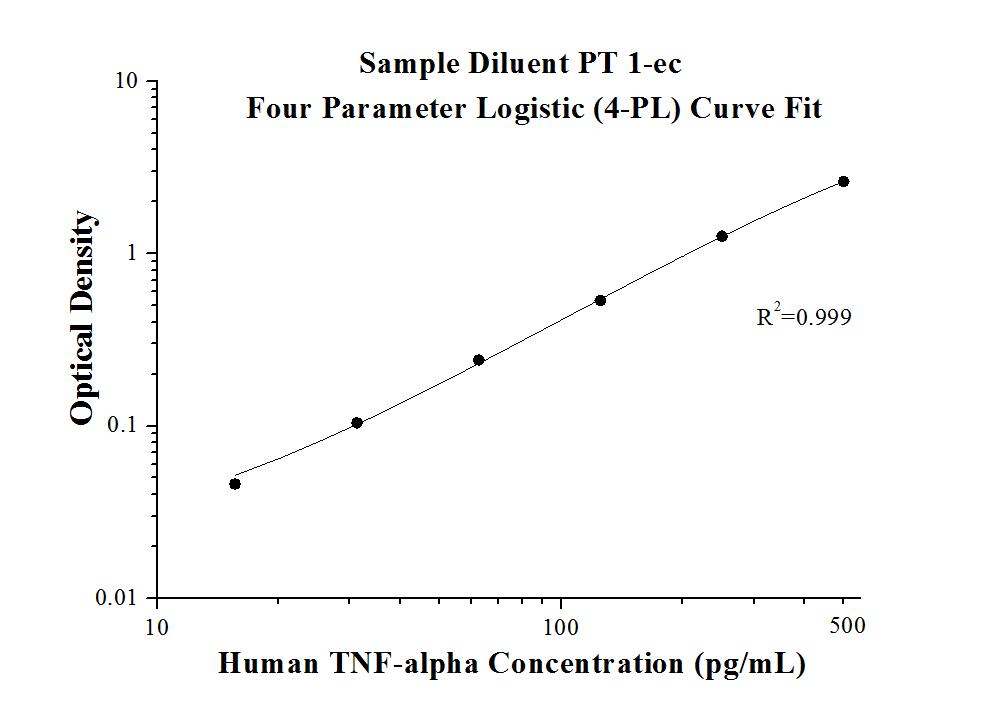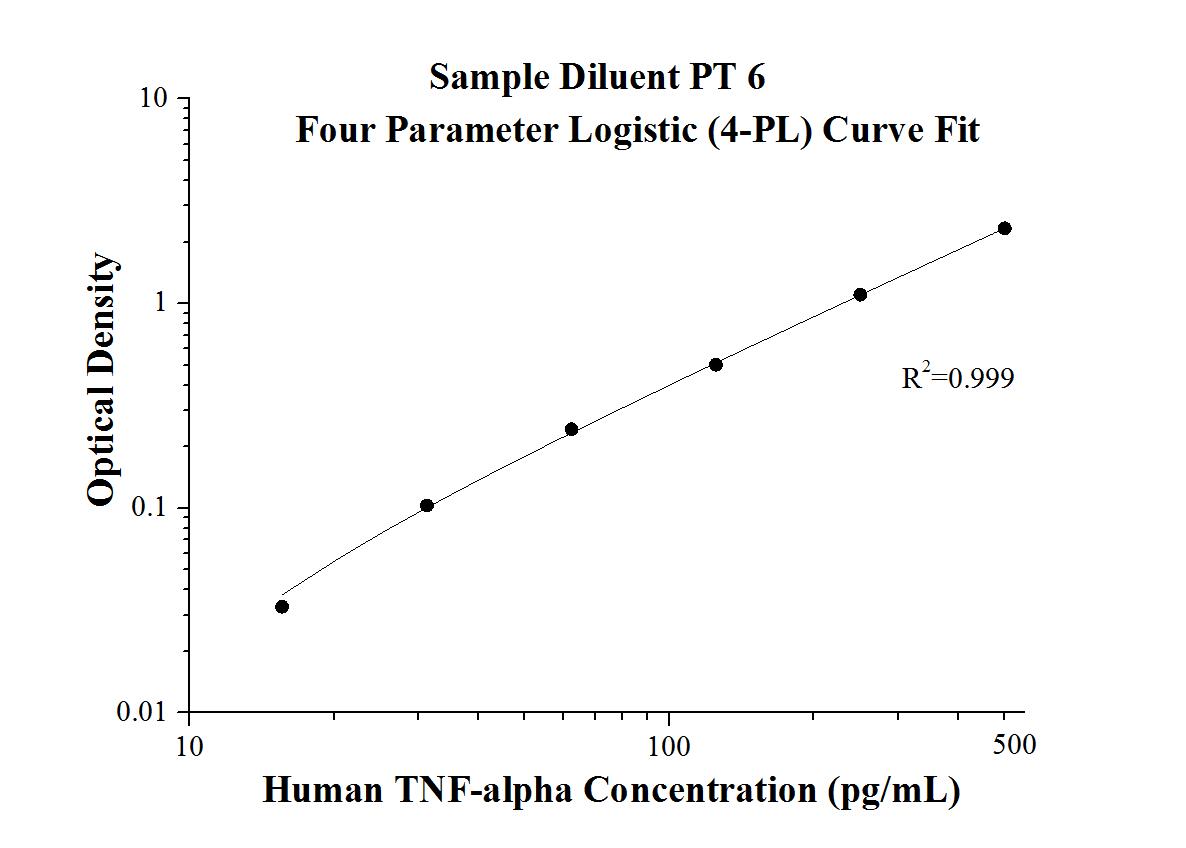AuthentiKine™ Human TNF-alpha ELISA Kit
Cat no : KE00154
Synonyms
Cachectin, DIF, TNF, TNF a, TNF alpha, TNFA, TNF-alpha, TNFSF2, TNFα, TNF-α, Tumor necrosis factor
Validation Data Gallery
Product Information
KE00154 is a solid phase sandwich Enzyme Linked-Immuno-Sorbent Assay (Sandwich ELISA). The TNF-alpha ELISA kit is to be used to detect and quantify protein levels of endogenous TNF-alpha. The assay recognizes human TNF-alpha. An antibody specific for TNF-alpha has been pre-coated onto the microwells. The TNF-alpha protein in samples is captured by the coated antibody after incubation. Following extensive washing, another antibody specific for TNF-alpha is added to detect the captured TNF-alpha protein. For signal development, horseradish peroxidase (HRP)-conjugated antibody is added, followed by Tetramethyl-benzidine (TMB) reagent. Solution containing sulfuric acid is used to stop color development and the color intensity which is proportional to the quantity of bound protein is measurable at 450 nm with the correction wavelength set at 630 nm.
| Product name | AuthentiKine™ Human TNF-alpha ELISA Kit |
| Tests | 1 X 96 well plate |
| Sample type | Serum, Plasma, Cell culture supernatants |
| Assay type | Sandwich |
| Sensitivity | 8.6 pg/mL |
| Range | 15.6-500 pg/mL |
| Reactivity | Human |
| Tested applications | Sandwich ELISA |
| Gene ID (NCBI) | 7124 |
Recovery
| Sample Type | Average | Range |
|---|---|---|
| Human Plasma | 102 | 82-117 |
| Cell culture supernatants | 95 | 85-106 |
IntraAssay
| Sample | n | mean ( pg/mL) | SD | CV% |
|---|---|---|---|---|
| 1 | 20 | 52.5 | 2.0 | 3.8 |
| 2 | 20 | 87.3 | 2.8 | 3.2 |
| 3 | 20 | 184.8 | 5.8 | 3.1 |
InterAssay
| Sample | n | mean ( pg/mL) | SD | CV% |
|---|---|---|---|---|
| 1 | 24 | 51.3 | 2.4 | 4.6 |
| 2 | 24 | 86.2 | 2.1 | 2.5 |
| 3 | 24 | 184.2 | 5.1 | 2.7 |
Background Information
TNF, as also known as TNF-alpha, or cachectin, is a multifunctional proinflammatory cytokine that belongs to the tumor necrosis factor (TNF) superfamily. It is expressed as a 26 kDa membrane bound protein and is then cleaved by TNF-alpha converting enzyme (TACE) to release the soluble 17 kDa monomer, which forms homotrimers in circulation. It is produced chiefly by activated macrophages, although it can be produced by many other cell types such as CD4+ lymphocytes, NK cells, neutrophils, mast cells, eosinophils, and neurons. It can bind to, and thus functions through its receptors TNFRSF1A/TNFR1 and TNFRSF1B/TNFBR. This cytokine is involved in the regulation of a wide spectrum of biological processes including cell proliferation, differentiation, apoptosis, lipid metabolism, and coagulation. Dysregulation of TNF production has been implicated in a variety of human diseases including Alzheimer's disease, cancer, major depression and inflammatory bowel disease (IBD).
Properties
| Storage Instructions | All the reagents are stored at 2-8℃ for 6 months or -20℃ for 12 months. Refer to the protocol for further storage instructions. |
| Synonyms | Cachectin, DIF, TNF, TNF a, TNF alpha, TNFA, TNF-alpha, TNFSF2, TNFα, TNF-α, Tumor necrosis factor |
Publications
| Species | Sample Type | Title |
|---|---|---|
J Immunother Cancer All-trans retinoic acid improves NSD2-mediated RARα phase separation and efficacy of anti-CD38 CAR T-cell therapy in multiple myeloma | ||
Oxid Med Cell Longev Comparison of Three Species of Rhubarb in Inhibiting Vascular Endothelial Injury via Regulation of PI3K/AKT/NF-κB Signaling Pathway. | ||
Oxid Med Cell Longev Catalpol-Induced AMPK Activation Alleviates Cisplatin-Induced Nephrotoxicity through the Mitochondrial-Dependent Pathway without Compromising Its Anticancer Properties. | ||
Oxid Med Cell Longev PPARγ Alleviates Sepsis-Induced Liver Injury by Inhibiting Hepatocyte Pyroptosis via Inhibition of the ROS/TXNIP/NLRP3 Signaling Pathway. | ||
Phytother Res Bergapten Ameliorates Psoriatic Skin Lesions and IL-17A-Induced Activation of the NF-κB Signaling Pathway via the Downregulation of CYP1B1 | ||
Int J Mol Sci Abiotrophia defectiva DnaK Promotes Fibronectin-Mediated Adherence to HUVECs and Induces a Proinflammatory Response. |

